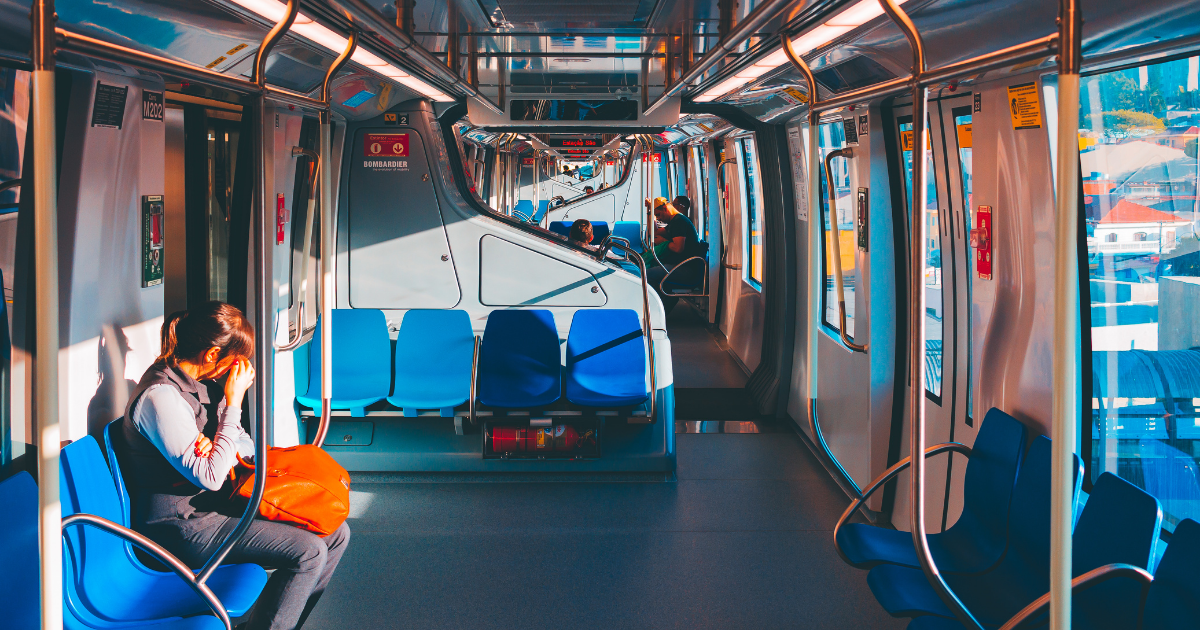
As we all know, COVID-19 had a dramatic impact on public transit ridership. According to a report prepared for the American Public Transportation Association, public transit ridership fell 79% nationally compared to 2019 levels as a result of the pandemic. Furthermore, even if you only looked at the second half of 2020 when ridership started to pick up, it only reached 65% of pre-pandemic levels.
Not only did ridership numbers plummet, but transit agencies felt upward pressure on the cost to operate the services that kept running. Supplying personal protective equipment (PPE), training, driver and personnel absences, and labor costs all contributed to rising expenses. These extraordinary measures were exacerbated by the concern for rider and employee safety, as well as policy restrictions aimed to increase safety and maintain social distancing on services.
At the time, most services were mostly limited to essential workers. The rest of the workforce who relied on public transit stayed home as most work locations closed—some permanently. Universities turned into ghost towns due to remote learning. Service lines that traditionally shuttled riders to shopping centers, conventions, and sporting events came to a halt. This ignited massive layoffs and revenue deficits in the travel and tourism industries, parlaying into huge drops in revenue dollars for states and municipalities who benefit from economic development events.
As these outcomes began to unfold, I distinctly remember forecasters trying to predict what the recovery would look like. Was it going to be a U-shaped or V-shaped recovery? While no one fully knew, one thing was for certain (and backed by scientific evidence): If we quickly vaccinated the American public, we could return to some form of normal.
Forecasting Ridership after COVID-19
Our current administration is rolling out vaccines at record numbers in an attempt to restore some sense of normalcy. While this transition is occurring, and people feel more comfortable conducting their normal routines, public transit will take some time to return to pre-ridership levels.
Or will it?
Most forecasts suggest that reduced ridership will continue to negatively affect transit revenue and reduce other revenue sources. As a result, transit agency budgets will struggle to support operating costs for transit services that are required to transport essential workers, employees returning to work, and people attending events. This, combined with low fuel costs and the permanence of work from home culture, will make riders take a second look at whether or not they need to use public transit.
Using Scenario Planning to Address Challenges
To facilitate the recovery of both public transit and shared mobility services in the short-term, and improve mobility for society over the longer term, researchers at the University of California Institute of Transportation Studies (UC ITS) and the Transportation Research Board’s (TRB) Executive Committee conducted a multi-phase scenario planning exercise based on the Delphi method from June to September 2020, drawing on 36 experts from across the United States, and representing all the different stakeholders that are being affected by transit ridership.
This comprehensive paper was completed over a six month period between June through December 2020. The experts “developed a series of policy options based on possible future scenarios across three time frames—within 12 months, one to three years, and four to six years—to assist in addressing the short-term challenges and eventual business recovery of public transit and shared mobility services along with longer-term improvements to these industries to increase mobility for all, particularly those in marginalized communities.”
The concept of scenario planning has been used by corporations since the 1970s. However, after the terrorist attacks on September 11, 2001, the use of scenario and contingency planning escalated and became commonplace. Tool development also improved during this time frame, and companies are finding more value than ever in planning for an uncertain future. While this technique is nearly well-perfected in corporate America, public finance is just recently adopting this technique.
Conceptually, planning for an uncertain economy by looking at various outcomes allows you to properly prepare budgets and cash flow. Most often you prepare at least four scenarios: a base case, best case, worst case, and a truly aspirational case. Within each of these scenarios, a range of factors are outlined including macroeconomic and exogenous factors that could impact each scenario.
Public Transit Scenario Planning Example
For instance, in regard to transit ridership, the base case for a transit agency in 2022 may be a 20% decline below the 2019 ridership numbers. A worst case may be a 50% decline below the 2019 ridership numbers. A best case may be a breakeven to the 2019 ridership numbers, and an aspirational case may exceed the 2019 ridership numbers by 20%.
Within each of these cases, you must develop the revenues and costs that are associated with each of these scenarios, and specifically highlight the factors required to achieve those results. This is an extraordinarily tedious process—a practice that transit agencies are not used to doing. It will force longer planning cycles, and may even require additional financial staff to complete. Comprehensive scenario planning can only be done effectively once those same tools and methodologies are applied not only to finance, but for all functional areas.
Transit agencies are managing the most uncertainty that they have ever experienced, and they must go through one of the most radical cultural transformations in their history. UC ITS and TRB Executive Committee’s blueprint provides a good map to help transit agencies ascend this daunting mountain with the goal of making a structurally-sound transition to a new normal in transportation.
